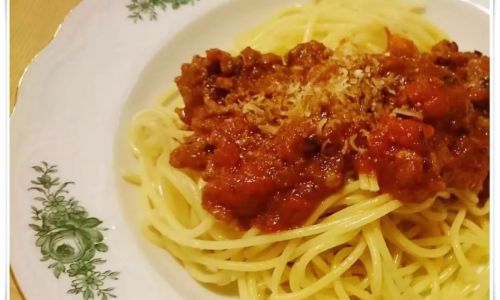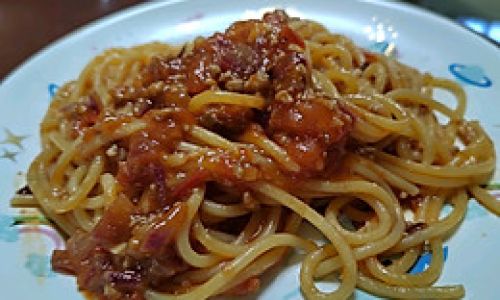Introduction
Italian pasta is a culinary staple enjoyed worldwide for its versatility, rich flavors, and comforting texture. Whether you’re a seasoned chef or an avid home cook, pairing the perfect sauce with your pasta can elevate your dish from ordinary to extraordinary. From creamy Alfredo to tangy marinara, the choice of sauce can make all the difference. In this article, we’ll explore some of the most popular and delicious pasta sauces, their origins, how to make them, and tips for pairing them with various pasta shapes and ingredients. By the end, you’ll be equipped with the knowledge to create mouthwatering pasta dishes that will delight your family and friends.
Classic Marinara Sauce
Marinara sauce is a simple yet flavorful tomato-based sauce that originated in Naples, Italy. Its name translates to “sailor’s sauce,” as it was traditionally made with tomatoes and olive oil, which were easy to store on ships. This sauce is light, slightly acidic, and often includes garlic and basil for added aroma and flavor.

Ingredients:
- 2 tablespoons olive oil
- 4 cloves garlic, minced
- 1 can (28 ounces) whole peeled tomatoes, crushed by hand or with an immersion blender
- Salt and freshly ground black pepper to taste
- A handful of fresh basil leaves, torn or chopped
Preparation:
- Heat the olive oil in a large saucepan over medium heat.
- Add the minced garlic and sauté until fragrant but not burnt (about 1 minute).
- Add the crushed tomatoes, including their juices, and bring to a simmer.
- Season with salt and pepper to taste.
- Let the sauce simmer gently for about 30 minutes, stirring occasionally.
- Stir in the fresh basil leaves just before serving.
Pairing Tips:
Marinara sauce pairs well with lighter pasta shapes like spaghetti, angel hair, or capellini. It’s also excellent with seafood pasta dishes, such as shrimp or clams, and can be used as a base for pizza.
Bolognese Sauce
Bolognese sauce, also known as Ragù alla Bolognese, is a rich, meat-based sauce that originates from the city of Bologna in northern Italy. It’s characterized by its slow cooking process, which allows the flavors to meld together beautifully. Bolognese sauce typically includes ground beef, tomatoes, milk or wine, carrots, celery, onions, and various spices.
Ingredients:
- 2 tablespoons olive oil
- 1 medium onion, finely chopped
- 1 carrot, finely chopped
- 1 celery stalk, finely chopped
- 2 cloves garlic, minced
- 1 pound ground beef (or a mix of beef and pork)
- 1 cup dry red wine (optional)
- 1 can (28 ounces) whole peeled tomatoes, crushed by hand or with an immersion blender
- 1 cup beef broth
- 1/2 cup milk
- 2 tablespoons tomato paste
- Salt and freshly ground black pepper to taste
- 1 teaspoon dried thyme
- 1 teaspoon dried oregano
- 1/2 cup freshly grated Parmesan cheese (optional, for serving)
Preparation:

- Heat the olive oil in a large, heavy-bottomed pot over medium heat.
- Add the chopped onion, carrot, celery, and garlic. Sauté until the vegetables are softened and the onion is translucent (about 5-7 minutes).
- Push the vegetables to one side of the pot and add the ground beef. Cook, breaking it up with a spoon, until browned all over.
- Pour in the red wine (if using) and let it simmer until reduced by half.
- Stir in the crushed tomatoes, beef broth, milk, and tomato paste.
- Add salt, pepper, thyme, and oregano. Stir to combine.
- Reduce the heat to low and let the sauce simmer gently, uncovered, for at least 2 hours, stirring occasionally. The sauce should be thick and rich.
- Taste and adjust the seasoning as needed.
Pairing Tips:
Bolognese sauce is traditionally served with wide pasta shapes like pappardelle, tagliatelle, or fettuccine. The rich, hearty flavor of the sauce complements these pasta types perfectly.
Alfredo Sauce
Alfredo sauce is a creamy, butter-based sauce that hails from the city of Rome. It’s named after Alfredo di Lelio, a chef who created the dish for a countess in the early 20th century. Alfredo sauce is simple yet luxurious, made with butter, heavy cream, and freshly grated Parmesan cheese.
Ingredients:
- 1 stick (1/2 cup) unsalted butter
- 2 cups heavy cream
- 1 cup freshly grated Parmesan cheese
- Salt and freshly ground white pepper to taste
- A pinch of nutmeg (optional)
Preparation:
- In a large saucepan, melt the butter over medium heat.
- Once the butter is melted and starting to bubble, pour in the heavy cream.
- Stir in the grated Parmesan cheese and let the sauce simmer gently, stirring constantly, until the cheese is melted and the sauce has thickened slightly (about 5-7 minutes).
- Season with salt and white pepper to taste. Add a pinch of nutmeg if desired.
- Taste and adjust the seasoning as needed.
Pairing Tips:
Alfredo sauce is best paired with delicate pasta shapes like fettuccine, spaghetti, or ravioli. It’s also delicious with grilled chicken, shrimp, or asparagus.
Pesto Sauce

Pesto is a vibrant, basil-based sauce that originates from the Liguria region of Italy. It’s made with fresh basil leaves, garlic, pine nuts, Parmesan cheese, and olive oil. Pesto is bright, herby, and slightly nutty, making it an excellent choice for summer pasta dishes.
Ingredients:
- 4 cups fresh basil leaves, packed
- 1/2 cup pine nuts (or walnuts)
- 2 cloves garlic, minced
- 1/2 cup freshly grated Parmesan cheese
- 1/2 cup extra-virgin olive oil
- Salt and freshly ground black pepper to taste
Preparation:
- In a food processor, combine the basil leaves, pine nuts, minced garlic, and Parmesan cheese.
- Pulse until the mixture is finely chopped.
- With the motor running, slowly drizzle in the olive oil until the sauce is well combined and smooth.
- Season with salt and pepper to taste.
- Taste and adjust the seasoning as needed.
Pairing Tips:
Pesto sauce pairs wonderfully with pasta shapes that can hold the sauce well, such as penne, fusilli, or farfalle. It’s also delicious with grilled vegetables, fish, or chicken.
Conclusion
The world of Italian pasta sauces is vast and varied, offering endless possibilities for creating delicious and satisfying dishes. Whether you prefer the simplicity of marinara, the richness of Bolognese, the creaminess of Alfredo, or the vibrancy of pesto, the right sauce can transform your pasta into a culinary masterpiece. By understanding the origins, ingredients, and preparation methods of these classic sauces, as well as their best pasta pairings, you’ll be able to create memorable meals that will leave your guests asking for seconds. Happy cooking!




0 comments